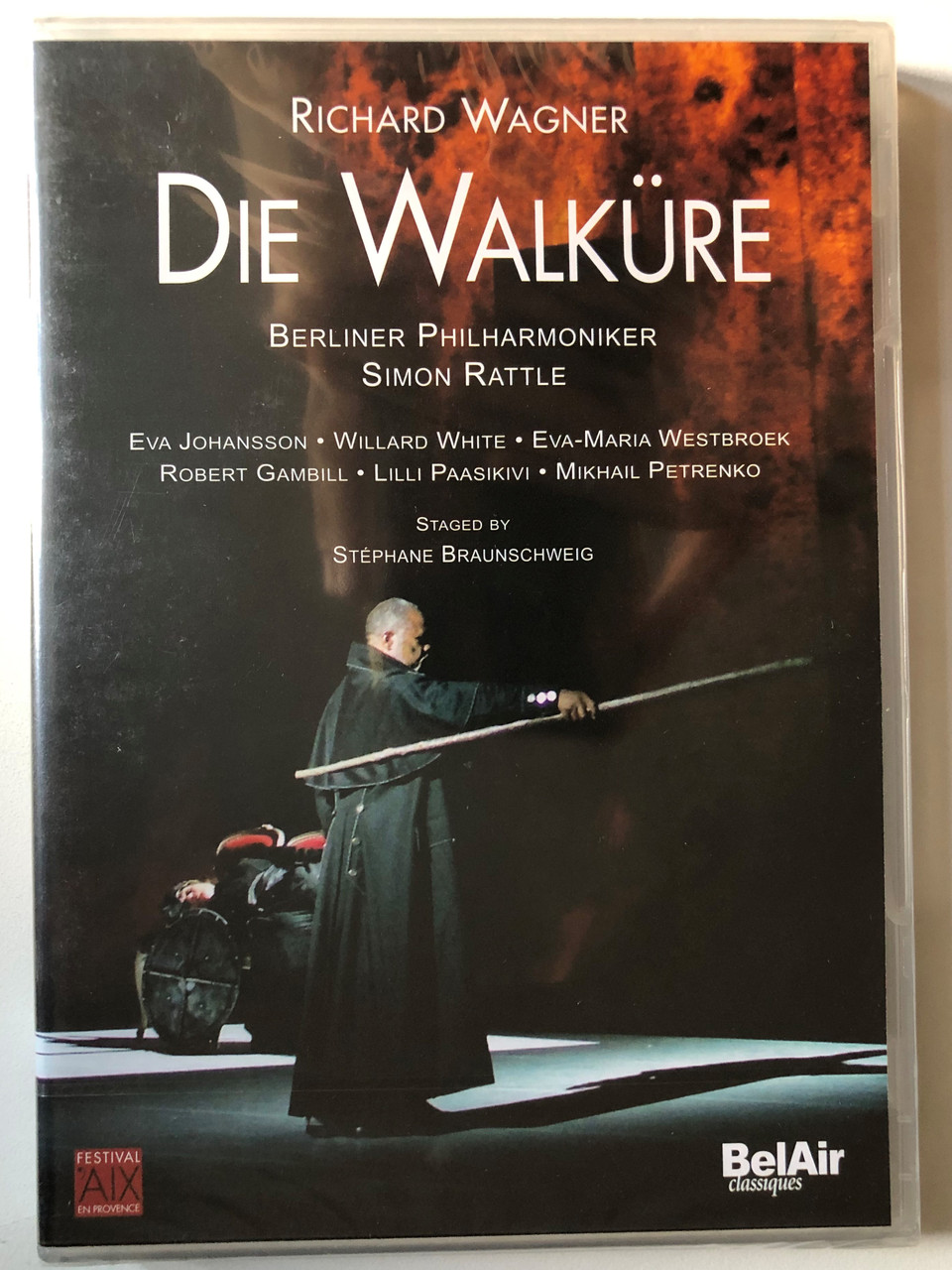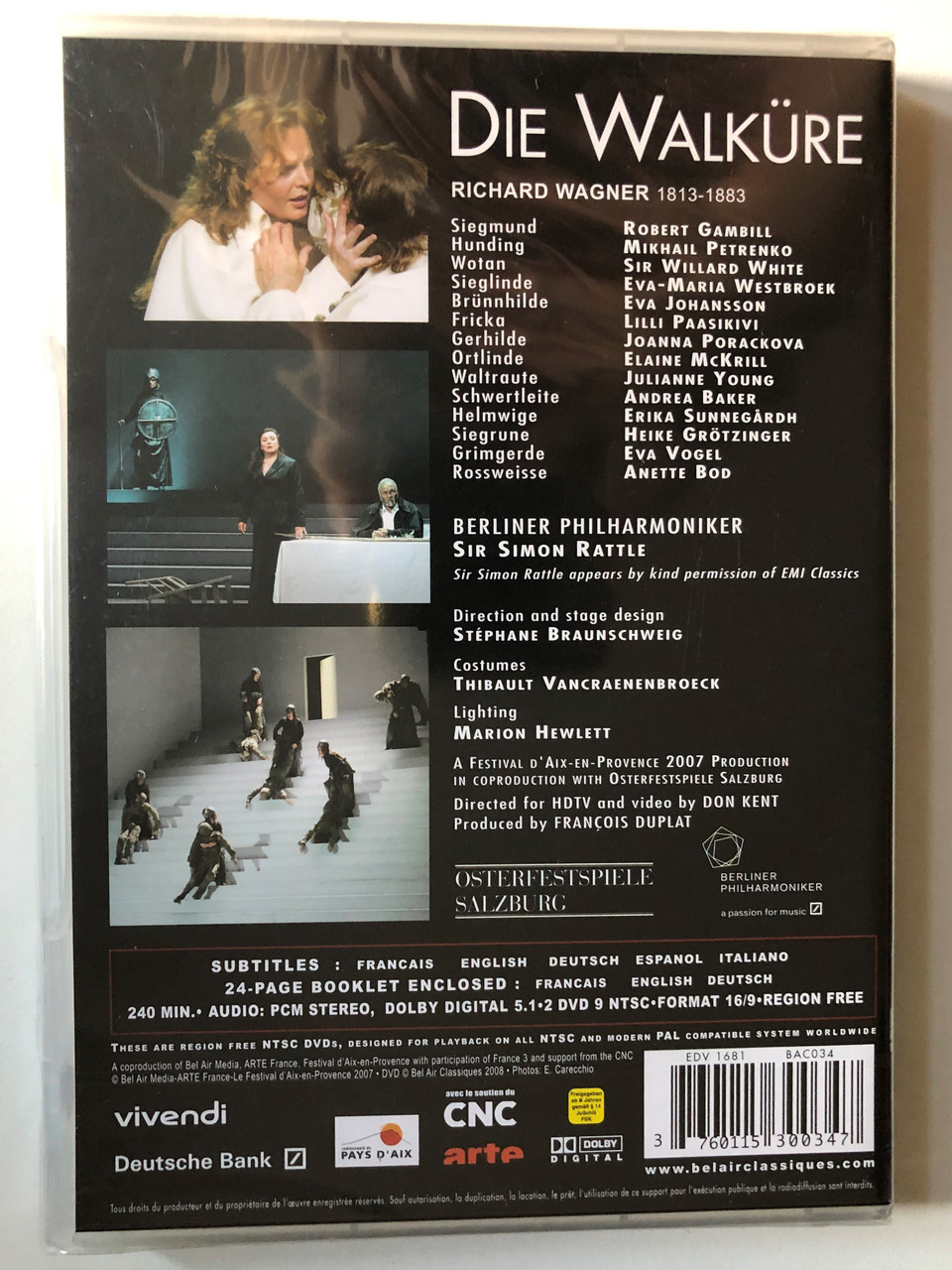Description
Wagner: Die Walkure (The Valkyrie) 2 DVD Set / SALZBURG EASTER FESTIVAL / BERLIN PHILHARMONIC ORCHESTRA / Conductor: SIR SIMON RATTLE / Directed for HDTV and video by DON KENT / DVD
Format: NTSC
Run time: 241 Minutes
UPC: 3760115300347
- Aspect Ratio : 1.78:1
- Is Discontinued By Manufacturer : Yes
- MPAA rating : NR (Not Rated)
- Product Dimensions : 7.75 x 5.75 x 0.53 inches; 0.01 Ounces
- Director : Stephane Braunschweig
- Media Format : Multiple Formats, AC-3, Color, Dolby, Classical, NTSC, Widescreen, THX, DTS Surround Sound, Surround Sound
- Run time : 4 hours and 1 minute
- Release date : November 11, 2008
- Actors : Robert Gambill, Willard White, Eva-Maria Westbroek, Eva Johansson, Lilli Paasikivi
- Dubbed: : None
- Subtitles: : English, French, German, Italian, Spanish
- Language : German (PCM Stereo), German (Dolby Digital 5.1)
- Studio : Bel Air Classiques
- Number of discs : 2
Die Walküre ([diː valˈkyːʁə]; The Valkyrie), WWV 86B, is the second of the four music dramas that constitute Richard Wagner's Der Ring des Nibelungen (English: The Ring of the Nibelung). It was performed, as a single opera, at the National Theatre Munich on 26 June 1870, and received its first performance as part of the Ring cycle at the Bayreuth Festspielhaus on 14 August 1876.
As the Ring cycle was conceived by Wagner in reverse order of performance, Die Walküre was the third of the four texts to be written, although Wagner composed the music in performance sequence. The text was completed by July 1852, and the music by March 1856.
Wagner largely followed the principles related to the form of musical drama, which he had set out in his 1851 essay Opera and Drama under which the music would interpret the text emotionally, reflecting the feelings and moods behind the work, using a system of recurring leitmotifs to represent people, ideas, and situations rather than the conventional operatic units of arias, ensembles, and choruses. Wagner showed flexibility in the application of these principles here, particularly in Act III, when the Valkyries engage in frequent ensemble singing.
As with Das Rheingold, Wagner wished to defer any performance of the new work until it could be shown in the context of the completed cycle, but the 1870 Munich premiere was arranged at the insistence of his patron, King Ludwig II of Bavaria. More than the other Ring dramas,[citation needed] Die Walküre has achieved some popularity as a stand-alone work and continues to be performed independently from its role in the tetralogy.
The story of Die Walküre is based on the Norse mythology told in the Völsunga saga and the Poetic Edda. In this version, the Volsung twins Sieglinde and Siegmund, separated in childhood, meet and fall in love. This union angers the gods, who demand that Siegmund must die. Sieglinde and the couple's unborn child are saved by the defiant actions of Wotan's daughter, the title character, Valkyrie Brünnhilde, who as a result faces the gods' retribution.

























